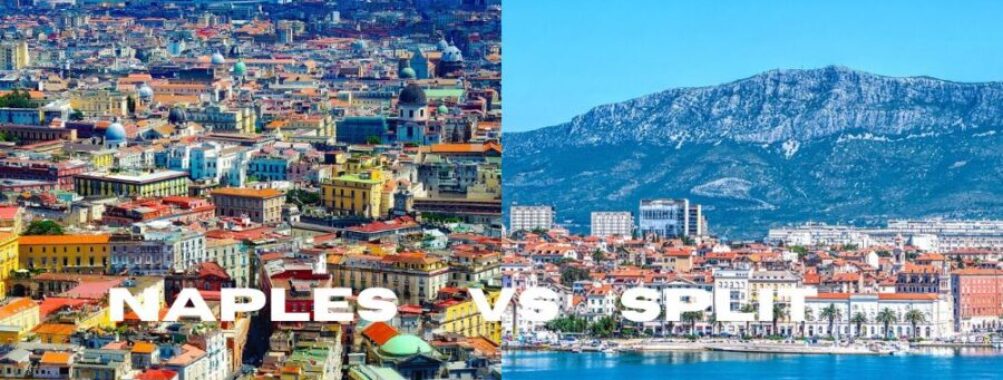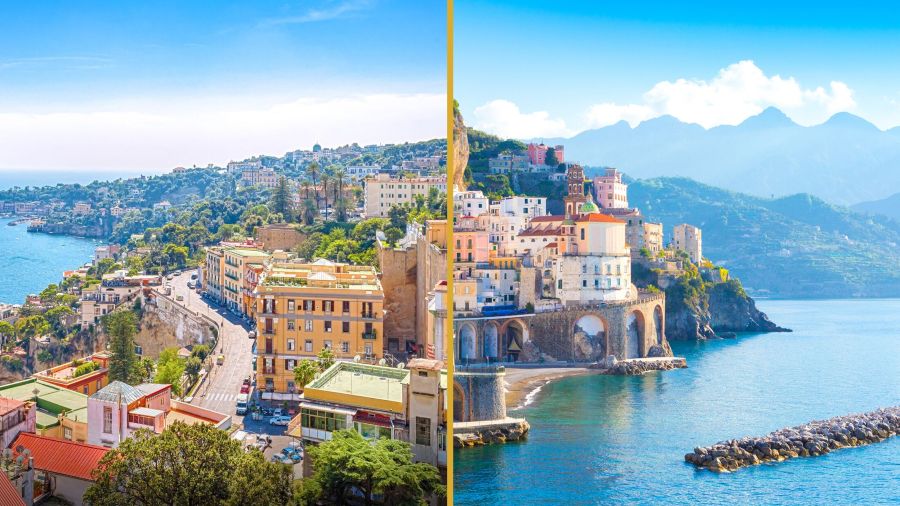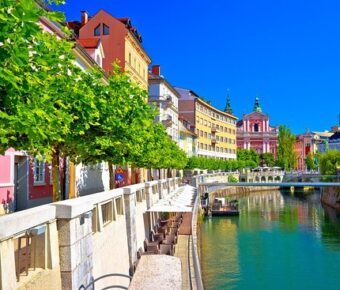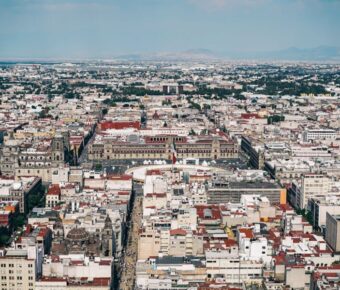
Naples vs Split: Which Mediterranean Gem Offers Better Value for Travelers in 2025
Naples and Split offer two distinct Mediterranean experiences that captivate visitors in unique ways. These coastal gems blend ancient history with modern charm, making them top picks for travelers seeking culture-rich destinations. Naples costs about 11% less than Split, while Split gets slightly more sunshine hours during summer months.
The Italian city of Naples sits along the stunning Gulf of Naples, treating visitors to views of Mount Vesuvius and easy access to the Tyrrhenian Sea. Split, perched on Croatia‘s Dalmatian Coast, dazzles with its Roman architecture and crystal-clear waters. Both cities serve as gateways to amazing day trips – Naples connects to Pompeii and the Amalfi Coast, while Split leads to beautiful Croatian islands.
These seaside cities share similarities in their love of fresh seafood, outdoor cafes, and vibrant street life. Split’s cleaner, more organized atmosphere contrasts with Naples’ raw energy and authentic Italian spirit. Each city presents its own take on Mediterranean living, giving travelers good reasons to visit either destination.
Contents
- Historical Overview and Culture
- Rich History of Naples
- Split’s Ancient Roots
- Geographical and Urban Exploration
- Naples’ Unique Landscape
- The Charms of Split’s Coastline
- Culinary Scene and Gastronomy
- Savoring Naples’ Gastronomy
- Taste of Split’s Cuisine
- Art and Museums
- The Artistic Legacy of Naples
- Museums and Galleries in Split
- Travel Tips and Recommendations
- Planning Your Naples Itinerary
- Making the Most of Split
- Leisure and Nightlife
- Naples: A Hub for Music and Evening Entertainment
- Living It Up in Split’s Night Scene
- Shopping and Local Markets
- Retail Therapy in Naples
- Discovering Split’s Shopping Scene
- Frequently Asked Questions
- What are the top attractions to visit when staying in Naples, Italy?
- What hidden gems can one explore in Split, Croatia beyond the popular tourist spots?
- How does the culinary scene compare between Naples and Split?
- What are the recommended day trips from Naples for cultural experiences?
- Can you suggest some less-explored historical sites in Split?
- What are some tips for navigating transportation when traveling between Naples and Split?
- More Travel Guides
Historical Overview and Culture
Naples and Split showcase rich layers of history spanning thousands of years. Both cities left lasting marks on Mediterranean civilization through remarkable architecture, traditions, and cultural achievements.
Rich History of Naples

Naples traces its roots to Greek settlers who founded the city as Neapolis in 600 BCE. The city grew into one of Europe’s largest cultural centers by 1600, with about 300,000 residents making it the continent’s biggest city at that time.
The Spanish Empire brought both prosperity and challenges to Naples. The 16th century marked a golden age of growth and development. Things changed in the 17th century when the city faced economic struggles.
Naples holds countless treasures from its past. The historic city center earned UNESCO World Heritage status for its blend of Greek street layouts, Roman structures, and medieval buildings. The nearby ruins of Pompeii and Herculaneum offer incredible glimpses into ancient Roman life.
Split’s Ancient Roots

Split’s story begins with Roman Emperor Diocletian, who built his massive retirement palace here around 305 CE. This palace forms the core of Split’s historic center today – a UNESCO World Heritage marvel where people still live and work within ancient Roman walls.
The city gained prominence as a crucial coastal trading hub between East and West. Roman architecture blends seamlessly with later Venetian, Gothic, and Renaissance additions throughout the old town.
Split enjoys more sunny days than Naples, with 345 hours of summer sunshine compared to Naples’ 313 hours. This climate helped shape the city’s outdoor culture and relaxed Mediterranean lifestyle that visitors experience today.
Geographical and Urban Exploration
Naples and Split offer two distinct geographical settings that shape their unique character. Each city’s natural features create special experiences for visitors exploring their streets and surroundings.
Naples’ Unique Landscape

The city spreads across hills overlooking the stunning Gulf of Naples. Mount Vesuvius looms in the background, creating a dramatic backdrop that defines Naples’ skyline.
The ancient Greek founders picked this spot wisely – the city’s layout follows the natural curves of the land and catches plenty of sunlight, especially during summer months.
Small cobblestone streets wind through the historic center, forming a maze-like pattern that invites exploration. Buildings stack up the hillsides, offering amazing views of the blue Tyrrhenian Sea below.
The Charms of Split’s Coastline

Split wraps around a natural harbor on the Adriatic Sea. The city’s beaches stretch along crystal-clear waters, perfect for swimming and seaside walks.
The famous Marjan Hill rises above the city, covered in pine forests and hiking trails. From its peak, you can see the islands dotting the coastline and the red roofs of the old town below.
The historic center sits on a small peninsula, protected by mountains on one side and the sea on three others. This special location helped Split grow into an important port city while keeping its natural beauty intact.
Some quiet coves and hidden beaches lie just outside the main harbor, away from the busy tourist spots. These spots give visitors a chance to enjoy Split’s natural side.
Culinary Scene and Gastronomy
Both Naples and Split offer distinct flavors that reflect their rich cultural heritage and coastal locations. Each city serves up unforgettable dining experiences shaped by centuries-old traditions and fresh local ingredients.
Savoring Naples’ Gastronomy

Naples is the birthplace of pizza, and local pizzerias craft authentic Neapolitan pizzas with San Marzano tomatoes and buffalo mozzarella. The dough must be hand-kneaded and baked in wood-fired ovens at specific temperatures.
Pasta dishes shine with local specialties like spaghetti alle vongole made with fresh clams from the Bay of Naples. The city’s street food scene buzzes with treats like frittatina (fried pasta balls) and cuoppo (paper cones filled with fried seafood).
Sweet treats are a Naples specialty. Local pastry shops serve sfogliatella (flaky pastries filled with ricotta) and traditional Neapolitan gelato made with local ingredients.
Taste of Split’s Cuisine

Split’s food scene combines Dalmatian coastal flavors with Mediterranean influences. Fresh seafood stars in dishes like black risotto with cuttlefish and grilled fish with Swiss chard.
Traditional spots around Diocletian’s Palace serve pašticada, a slow-cooked beef dish in sweet-savory sauce. Local restaurants dish up fresh octopus salad and gregada, a fish stew made with potatoes and herbs.
Street food options include čevapi (grilled meat rolls) from casual eateries. The local green market, Pazar, offers fresh produce, olives, and Croatian prosciutto perfect for picnics by the sea.
Art and Museums
Both Naples and Split offer rich artistic heritage and world-class museums, each reflecting their unique cultural identities through preserved masterpieces and contemporary works.
The Artistic Legacy of Naples

Naples shines as a hub for art lovers with its mix of classic and modern galleries. The Naples National Archaeological Museum stands out with its remarkable Roman artifacts and treasures from Pompeii.
The Palazzo delle arti Napoli (PAN) brings contemporary art to life through rotating exhibitions. Past shows have featured David Bowie photography and M.C. Escher works.
The city’s churches double as art museums. The Naples Cathedral Treasury displays stunning jeweled pieces and precious metal statues in a beautifully designed space.
Several paintings by Caravaggio can be found throughout Naples, including his famous works at the Pio Monte della Misericordia.
Museums and Galleries in Split

Split’s museum scene focuses on preserving Croatian heritage and Mediterranean culture. The Split City Museum occupies a stunning 15th-century Gothic palace.
The Gallery of Fine Arts houses an impressive collection of Croatian art from the 14th century to modern times. Its collection includes over 5,000 works across various mediums.
The Meštrović Gallery celebrates Croatia’s most famous sculptor, Ivan Meštrović. The museum is set in his former seaside villa and features his best marble and bronze works.
Maritime history comes alive at the Croatian Maritime Museum, showcasing Split’s seafaring past through model ships and navigation equipment.
Travel Tips and Recommendations
Smart planning makes exploring these Mediterranean gems much easier. Each city needs specific strategies to get the most from your visit.
Planning Your Naples Itinerary

Book tickets in advance for popular attractions to avoid long wait times. The best areas to stay are Chiaia for luxury trips or the Spanish Quarter for local vibes.
Don’t trust Google Maps for business hours in Naples. It’s better to call ahead or check social media for current opening times.
Getting around Naples works best with a mix of walking and public transit. The Metro Art Stations double as underground museums – worth a visit just to see them.
Find affordable hotels near Piazza Garibaldi for easy access to trains and buses. Pack comfortable walking shoes – Naples has lots of hills and cobblestones.
Making the Most of Split

The morning offers the best time to explore Split’s old town before cruise ship crowds arrive. Book guided tours early in your trip to get oriented.
Rent bikes to explore Marjan Hill – it’s a great escape from summer heat. The views of the city are amazing from up there.
Island hopping makes Split special. Regular ferries run to Brač, Hvar, and Vis islands. Each has its own charm.
The Riva waterfront comes alive at sunset. Grab an ice cream and join locals for the evening stroll.
Choose accommodations inside Diocletian’s Palace walls for a unique experience. The stone walls keep rooms naturally cool in summer.
Leisure and Nightlife
Both Naples and Split offer exciting evening entertainment scenes, each with its own distinct flavor of Mediterranean nightlife and music culture. The cities showcase different approaches to after-dark fun, from casual wine bars to vibrant dance clubs.
Naples: A Hub for Music and Evening Entertainment

The Spanish Quarter buzzes with energy as night falls. Small wine bars and casual pubs fill the narrow streets, where locals and tourists mix over Aperol spritzes and regional wines. Live music spills out from cozy venues, featuring everything from traditional Neapolitan songs to modern jazz.
The city’s nightlife centers around Piazza Bellini, packed with university students and young professionals. Historic cafes transform into cocktail spots after sunset. Many bars stay open until 2 AM on weekends.
Street performers add charm to evening walks through the historic center. You’ll find musicians playing classical pieces next to contemporary rock bands.
Living It Up in Split’s Night Scene

Split’s waterfront promenade, the Riva, comes alive at night with open-air cafes and bars. Young crowds gather at beach clubs along Bačvice Beach, where DJs spin electronic music until sunrise.
The Diocletian’s Palace walls hide intimate cocktail bars in ancient cellars. These spots blend history with modern drinks and music. Local craft beer pubs have popped up in recent years, offering Croatian brews.
Summer brings outdoor festivals and concerts to Split’s historic squares. The city hosts popular electronic music events that draw international DJs and party-goers from across Europe.
Shopping and Local Markets
Both cities offer unique shopping experiences, from high-end boutiques to bustling local markets where you can find fresh produce, antiques, and traditional crafts.
Retail Therapy in Naples

The Chiaia District stands out as Naples’ fashion hub, packed with designer stores and elegant boutiques. You’ll find Italian luxury brands next to local artisan shops selling handmade leather goods and accessories.
Via Toledo, Naples’ main shopping street, buzzes with energy. This historic avenue features a mix of international chains and family-owned stores selling everything from clothing to traditional Neapolitan souvenirs.
The city’s markets add a different flavor to shopping. Mercato di Antignano shines with its fresh produce, local cheeses, and traditional baked goods. The vendors create a lively atmosphere with their friendly banter and local charm.
Discovering Split’s Shopping Scene

The maze-like streets of Diocletian’s Palace host Split’s shopping centers. Here, tiny shops sell Croatian crafts, jewelry, and local wines.
The Split City Center Mall offers modern retail therapy. It has international brands and air-conditioned comfort – perfect for escaping the summer heat.
Split’s Green Market (Pazar) brings locals and tourists together each morning. Farmers display fresh fruits, vegetables, and Croatian specialties like dried figs and lavender products.
The fish market near the palace opens early with the day’s catch. The marble stalls showcase the Adriatic’s finest seafood, giving visitors a glimpse into daily Croatian life.
Frequently Asked Questions
Both Naples and Split offer unique experiences that create lasting memories for travelers seeking authentic Mediterranean charm. Each city maintains distinct cultural traditions while providing modern amenities and accessibility.
What are the top attractions to visit when staying in Naples, Italy?
The National Archaeological Museum stands as a must-visit destination with its stunning collection of artifacts from Pompeii and Herculaneum. The museum also houses the famous Farnese collection.
Mount Vesuvius provides an unforgettable experience with its 30-minute hike to the crater. The trek rewards visitors with spectacular views across the Bay of Naples.
Walking along Naples’ waterfront during sunset creates magical moments. Many travelers enjoy a traditional evening passeggiata while savoring gelato.
Local markets like Stari Pazar offer authentic Croatian products and fresh produce away from tourist crowds. Meanwhile, the morning fish market gives visitors a glimpse into daily Split life.
Marjan Forest Park provides peaceful walking trails and hidden beaches. The park’s elevated position offers beautiful views of the Adriatic Sea.
How does the culinary scene compare between Naples and Split?
Naples takes pride in its pizza-making tradition, with countless family-run pizzerias using wood-fired ovens. The city’s street food scene thrives with local specialties.
Split, on the other hand, excels in fresh seafood dishes and Dalmatian cuisine. Local konobas serve traditional meals with Croatian wines.
What are the recommended day trips from Naples for cultural experiences?
Pompeii remains an essential visit for understanding ancient Roman life. The preserved ruins tell stories of daily activities from 2,000 years ago.
Herculaneum offers a smaller but equally fascinating archaeological site. Its artifacts show remarkable preservation.
Can you suggest some less-explored historical sites in Split?
The basement halls of Diocletian’s Palace hide interesting medieval workshops. Local artisans still work in these ancient spaces.
Sustipan Cemetery Park combines history with stunning sea views. The old church ruins create perfect sunset viewing spots.
Ferry services connect both cities during summer months. The journey takes around 10 hours across the Adriatic Sea.
Flying remains the quickest option with direct flights available seasonally. The flight time spans approximately one hour.
Local buses and boats provide easy access to nearby attractions in both cities. Many sites stay within walking distance of city centers.



